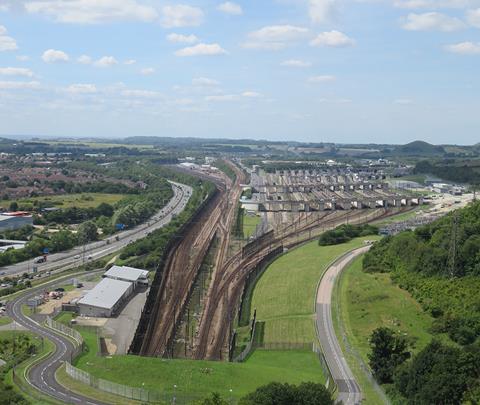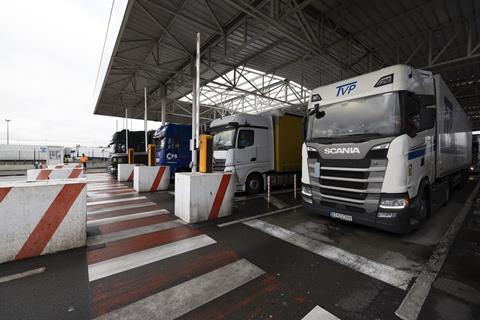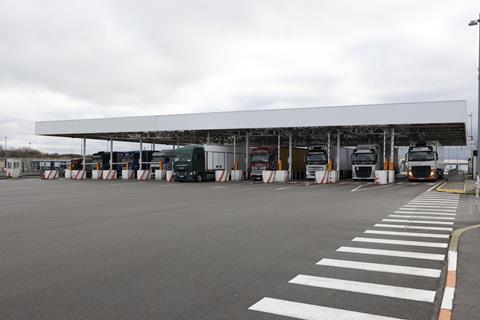
EUROPE: Channel Tunnel operator Getlink has completed a key stage of work at its French road vehicle shuttle train terminal in Coquelles in preparation for implementing the European Union’s Entry/Exit System on October 6 this year.
Part of an €80m investment plan for 2022-24 covering works at the French terminal and its smaller twin at Folkestone in the UK, the project entails construction of dedicated pre-registration buildings and installation of kiosks for biometric checks of road vehicle drivers and passengers.
The French pre-registration building and associated civil works are now finished and completion of the biometric kiosks is expected in early May. At the Folkestone terminal civil works to adapt the site for the EES entry checks are expected to be finished in time for installation of the biometric kiosks in July.
The kiosks supplied by French manufacturer IN Groupe are specifically designed for car passengers, with a total of 224 kiosks due to be installed at the two terminals. Tests carried out by Eurotunnel with four sets of equipment and 180 volunteer passengers suggested that ‘the biometric equipment was easy to use, rapid and state of the art’. Eurotunnel’s operational model was designed using a digital twin to simulate passenger flows during peak periods with up to 2 000 passengers or 700 vehicles per hour.

The Coquelles terminal now has a 7 000 m2 covered drive-through area for EU exits by non-EU nationals. This has been designed to accommodate 60 passenger vehicles simultaneously.
Each vehicle bay in the terminals will have two static kiosks where non-EU passengers will undergo biometric facial and fingerprint checks; the two kiosks are intended to allow rapid processing of all passengers in each car.
Once the initial passenger data has been captured by the EES in the EU database, the checking process for subsequent crossings will be quicker as the passenger will only need to undergo facial recognition with no need to answer further questions. Separate lanes will be provided for vehicles with passengers who have already undergone registration and those who have not previously registered.

Registration for entry into the EU for non-EU citizens will be valid for three years and will be extended by three years every time a traveller enters the EU. They will only be required to re-register if they have not crossed an EU border within three years.
Getlink CEO Yann Leriche said that ‘we are very pleased with progress on this project … with over 70% of LeShuttle passengers being British, our objective is to comply with the new EES requirements whilst maintaining the high level of fluidity, speed, and simplicity at the border crossing that our customers value’.

















